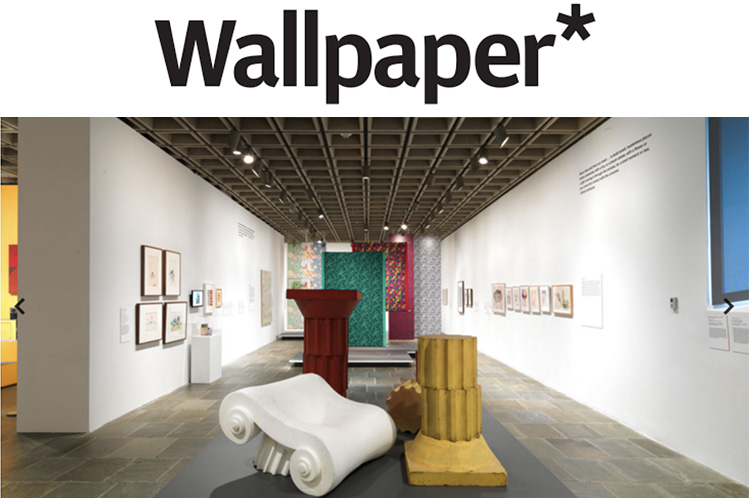By Pei-Ru Keh
July 27, 2017
The visionary architect and designer Ettore Sottsass is being honoured front and centre at the Met Breuer in New York City, one of the most monumental celebrations (of the many) of his 100th birthday this year. With a career that spanned over six decades, Sottsass’ extensive body of work has been neatly distilled by the museum into a show spanning architectural drawings, interiors, ceramics, textiles, jewellery, painting, glass and of course furniture, that truly sums up the breadth of his talents.
Curated by Christian Larsen, associate curator of modern design and decorative arts, ‘Ettore Sottsass: Design Radical‘ brings together some of the designer’s most recognisable works, including his ‘Carleton Room Divider’ (1981), ‘Tartar’ table (1985), Olivetti portable typewriter (1968), and ceramic vessels for Bitossi, and a selection of rarer ones. Of these, five industrial ceramic totems – ‘Menhir, Ziggurat’,‘Stupas’, ‘Hydrants’, and ‘Gas Pumps’ (1965–66) – originally displayed at Galleria Sperone in 1967, are the most commanding and reflect many of the principles, materials and techniques that subsequently formed the Memphis movement in 1981.
To palpably prove Sottsass’ enduring influence on the world of design and art, Larsen has also included several contemporary art and design pieces in the exhibition. Works by Donald Judd, the British design studio Oeuffice, Norwegian jewellery designer Millie Behrens and Studio Job easily demonstrate how Sottsass’ distinctive aesthetic has seeped into different aspects of the art and design world. Conversely, a selection of ancient totems, furniture by Koloman Moser, paintings by Paul Klee and Wassily Kandinsky delineate the early influences for Sottsass’ own output.
…










